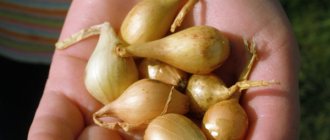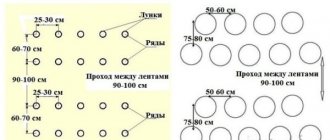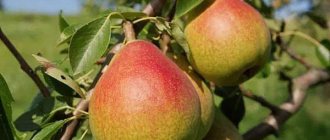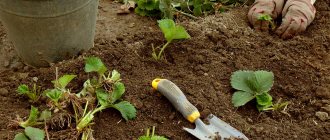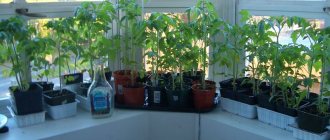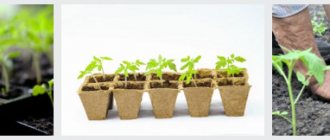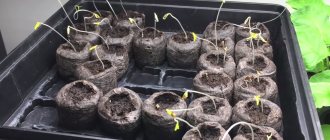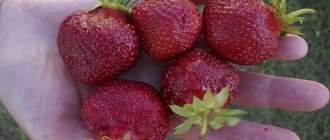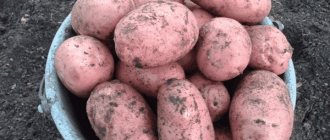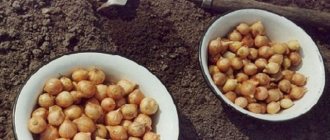Features of the region
The gardener's lunar calendar for the Moscow region is compiled based on the characteristics of the region and its climatic characteristics. Depending on other regions, in the Moscow region and Moscow region winter lasts up to 206 days. A lot of snow falls already in November, and in the summer it rains a lot.
The following weather conditions are typical for the Moscow region:
- mild frosts in winter;
- warm, not hot summer;
- average temperature in summer is +17°C, and in winter up to -10°C;
- long-term snow cover;
- winds blow most often from the east, west and northwest;
- The transition from one season to another is expressed clearly and sharply.
The region is characterized by high humidity. Due to this, some garden crops are difficult to grow here. For example, stone fruit trees are most damaged in the Moscow region. This is due to the cold and heavy soil.
Work calendar for September
In September, gardeners begin the autumn planting of trees and shrubs in prepared planting holes filled with organic and phosphorus-potassium fertilizers. The main thing is to mix them well with the soil to avoid burning the root system.
Back in September, before the onset of cold weather, the remaining harvest is harvested, watering of fruit trees is gradually stopped, bushes are pruned, and hunting belts are removed.
Favorable days for planting garlic are determined empirically. After harvesting, several heads should be placed on the bed and left there. After two or three months (this will depend on the weather), the roots of the head will begin to grow into the ground, this is a sign to the gardener: plant, don’t hesitate! This method eliminates any errors.
September is good for feeding fruit crops. If you feed later, it will be useless at best: the plants will not have time to absorb nutrients after completing the growing season. In the worst case, fertilizing will provoke growth processes, the plant will not go into dormancy and will most likely freeze in the winter.
This is also the best time for formative pruning of gooseberries, currants and even plums - the plum quickly “falls asleep” and responds well to autumn pruning. Pruning is done well if you can easily reach any branch with your hand.
September life hack: this is the month you need to buy and replant roses. They are sold in bloom, and the grower will know exactly what he is buying. Before winter the roses will have time to take root.
The second life hack concerns planting bulbous plants (all bulbous plants!): two centimeters of clean river sand at the bottom of the planting hole - and the plant will not get sick. The depth of planting bulbs depends on their size: small ones are buried by 8-9 cm, large ones by 13-15 cm.
Bulb planting schedule:
- Beginning of September: muscari and other small onions;
- Mid-September - daffodils (they are buried 15-22 cm);
- End of September - tulips.
Another important floriculture task: replanting peonies. They must be divided every three years, otherwise their root system will go deep into the ground and begin to rot, and this will inevitably affect the size and beauty of the flowers.
Moon phases
The landing calendar is formed based on the location of the star in a particular phase. There are four phases, which are determined depending on the visibility of the Moon. Taking into account the phase, planting days are calculated, days on which certain manipulations with plants can be carried out are indicated or not recommended. If you plant or sow according to the Moon, as well as carry out any gardening activities, taking into account the phase of the luminary, then the harvest will be good.
Waxing Crescent
This period is the most favorable. At the time of the growth of the lunar month, the metabolic process above the root system is activated and the fruits that grow above the ground ripen. This is explained by the fact that most of the water is located in the upper part of the root system. Therefore, plants that need a lot of moisture are planted during this period.
At this time, the sharp ends of the month are directed to the right. They allow transplanting, gartering, and planting crops that bear fruit above the ground. In addition, fertilizing and grafting can be carried out, as well as all earthworks.
Full moon
This phenomenon is characterized by the appearance of a full lunar disk in the sky. At this time, it is not recommended to carry out a lot of gardening work. You can only carry out land work, collect root crops, and store them for long-term storage. It is not recommended to plant, replant, tie up plants or loosen the beds.
On a note! During the new moon period, it is not recommended to heat treat root crops. Choose another method of storing for long term storage.
Waning moon
This period is characterized by turning the tips of the crescent to the left. This is the time when the metabolism in the roots is activated, and in the above-root part, on the contrary, it decreases. It is not recommended to replant crops or cultivate the land.
It is permissible to plant crops in which the harvest ripens underground. This includes bulbous, root crops, etc. In addition, you can thin out the beds, remove weeds, fertilize and water. During the waning Moon, they are engaged in planting new trees or shrubs, pruning and forming crowns in already planted trees.
New moon
When this phase begins, the star is not visible in the sky. All metabolic processes on the earth freeze, so gardening work is not recommended. This is especially true when planting, replanting or pruning. At this time, it is recommended to weed the beds, remove weeds or damaged and dry branches on trees and shrubs. It is advisable to postpone other work to more favorable days.
Work calendar for May
In May, seedlings of tomatoes, cucumbers and other vegetable crops are planted in greenhouses, unheated greenhouses or open ground. A good time for planting seedlings in the OG from a scientific point of view is when not the stars, but three circumstances come together:
- The seedlings will reach the recommended age;
- Return frosts will occur;
- The soil temperature will warm up to +8 - +10 degrees (it is measured at the bottom of the planting hole).
In May, seeds of annuals that are resistant to cold are sown in the ground, as well as beets, cabbage, radishes and other crops. During budding and flowering, perennials are fed a third time - with complete mineral fertilizer.
Asters are dug up and divided, gladioli are planted. Potatoes are planted.
The best day to plant potatoes is when the soil is well warmed up. The minimum temperature is +7-+8 degrees, the optimum is +10-+12 degrees.
Nikolay Egorov, agronomist-seed grower of the West Siberian Vegetable Experimental Station
The better the soil warms up, the less likely it is that fungal diseases will occur, which are facilitated by low temperatures. It is better to wait until the cold wave passes and warming begins.
Potatoes have a short growing season, a maximum of 60 days; they will have time to grow and can be safely planted in June.
Table of favorable days
The agricultural calendar provides for favorable days for planting crops in the Moscow region. Thanks to the information, you can navigate when it is best to plant and care, water or pick. The recommendations are made taking into account the location of the sun in the sky and in which zodiac it is located.
| Culture | January | February | March | April | May |
| Tomatoes | 4, 12-14, 17-24 | 2-5,8, 9,12-14, 17, 18, 23, 24 | 5,12-17, 20, 22, 24-26 | 5, 8, 10, 11, 13, 16, 18, 21, 23, 26, 27 | 2, 3, 6, 7, 10, 15, 16, 20, 21, 25-28 |
| Pepper | 3-6,9-14, 16, 23-30 | 1-4, 8-11,14, 18,19, 27, 29-31 | 2-5, 7-9, 20-24 | 1, 3-5, 8, 13-15,19, 28 | 1,3,5,8,9,13, 15-19, 27, 28 |
| Eggplant | 1, 2, 5, 13, 15-17, 20, 24, 28, 29 | 4, 7-9, 12-14, 17-25 | 3, 5, 8, 13-22, 24-28 | 3, 5, 8, 9, 13, 15-22, 24-28 | 2, 5-7, 12-17, 19-22, 24-26, 28, 29 |
| Cabbage | – | 2, 4, 7-9, 12-14, 17-25 | 3, 5, 6, 17, 18, 22, 27, 29, 30 | 5-7, 10, 13, 14, 18, 19, 23, 25, 29 | 2, 4-6, 15-17, 24-26, 30, 31 |
| cucumbers | – | 10-12, 14, 15, 17-19, 24, 25 | 1, 2, 5-7, 10-17, 19-22, 24-26, 28 | 5-7, 10, 11, 14, 18, 19, 25-27, 29 | 2-6, 15-17, 24-26, 30, 31 |
| Zucchini and pumpkin | – | 10, 15, 17, 20, 24, 25, 28, 29 | 3, 4, 6, 17, 18, 22, 27, 29, 30 | 5-7, 10, 12, 14, 18, 19, 23, 27-30 | 2, 4-6, 15-18, 19, 24-28, 30, 31 |
| Legumes | – | 10, 15, 17, 20, 24, 25, 28, 29 | 3, 4, 6, 17, 18, 22, 27, 29, 30 | 5-7, 10, 12, 14, 18, 19, 23, 25, 27, 29 | 2, 4-6, 15-17, 24-26, 30, 31 |
| Greens and salads | – | 10, 15, 17-20, 24, 25 | 3, 5, 6, 17, 18, 22, 27, 29, 30 | 5-7, 10, 12, 14-16, 18, 19, 23, 25, 27-29 | 2, 6, 24-26, 31 |
| Beetroot and carrots | – | 1-3, 5, 7, 12-15, 18-20, 24, 25 | 4, 6, 10-12, 14, 15, 27, 28 | 1, 2, 10-14, 18, 19, 28, 29 | 5, 6, 11, 12, 15, 16, 25, 26 |
| Potato | – | 1-3, 5, 7, 12, 13, 15, 18, 20, 24, 25 | 4-6, 10, 12-15, 27, 28 | 2, 10-14, 18, 19, 28, 29 | 5, 6, 11, 12, 25, 26 |
| Tree planting | 1, 5-9, 11, 16-22, 27-29 | 1-7, 12, 14, 15, 19, 20, 23-25 | 1-6, 9, 11-18, 22, 23, 25-31 | 1, 2, 7, 8, 10, 14, 18, 19, 23-30 | 4-7, 11, 12, 15, 16, 20, 23-26 |
| Pest treatment | 12, 13, 16, 17, 19, 20, 24, 30, 31 | 5, 8, 10, 11, 13, 16, 18, 21, 23, 26, 27 | 1, 2, 7-9, 11-16, 19-26, 29-31 | 3-6, 9-14, 16-23, 30 | 1, 4, 8-14, 17-24, 28-31 |
On a note! On the days indicated in the table, planting is carried out with seeds and seedlings. Can be transplanted into open ground or planted from a single container into separate containers.
| Culture | June | July | August | September | October |
| Tomatoes | 1-4, 6-8, 15, 16, 22, 23,28-30 | 1, 3-5, 9, 10, 14, 15, 25-28, 31 | 1, 2, 5-7, 10, 12-14, 21-23, 25, 26, 29 | 3, 6, 13, 18, 25, 30, 31 | – |
| Pepper | 1-4, 6, 8, 12, 13, 22, 23, 26, 27, 29, 30 | 1, 3-5, 9, 10, 14, 15, 23-25, 27, 29, 31 | 1, 2, 5-7, 10, 12-14, 16, 21-23, 25, 26, 28, 29 | 3, 6, 13, 18, 25, 30, 31 | 4, 10, 13, 14, 17, 23, 26, 27, 31 |
| Eggplant | 1, 3, 4, 6-8, 12, 13, 15, 16, 21-24, 26, 28, 30 | 1, 3, 5, 9, 10, 14, 15, 23, 25, 27, 31 | 1, 2, 5, 7, 10, 16, 21, 26, 28, 29 | 6, 13, 18, 25, 30, 31 | 4, 10, 13, 14, 7, 23, 26, 27, 31 |
| Cabbage | 1, 3, 4, 6-8, 12, 13, 22, 23, 26-28, 30 | 3, 5, 9, 10, 14, 15, 23-25, 27, 29 | 1, 2, 5-7, 10, 12-14, 16, 21, 23, 25, 26, 28, 29 | 3, 6, 13, 18, 23, 25, 30, 31 | 4, 10, 13, 14, 17, 23, 26, 27, 31 |
| cucumbers | 1-4, 6, 7, 12, 13, 22, 23, 26-28, 30 | 1, 3-5, 9, 10, 14, 15, 23-26, 28, 29, 31 | 1, 2, 5-7, 10-14, 16, 21-23, 25, 26, 28, 29 | 3, 6, 13, 18, 25, 30, 31 | 5, 7, 9, 13, 14, 17, 18, 20, 21, 23, 26, 27, 31 |
| Zucchini and pumpkin | 1-4, 6-8, 12, 13, 22, 23, 26, 28, 30 | 1, 5, 9, 10, 14, 15, 23, 31 | 1, 2, 5, 7, 10, 16, 21, 26, 28 | 3, 6, 13, 18, 25, 30, 31 | 4, 10, 13, 14, 17, 23, 26, 27, 31 |
| Legumes | 1-4, 6-8, 12, 13, 22, 23, 26, 28, 30 | 1, 5, 9, 10, 14, 15, 23, 31 | 1, 2, 5, 7, 10, 16, 21, 26, 28, 29 | 3, 6, 13, 18, 25, 30, 31 | 4, 10, 13, 14, 17, 23, 26, 27, 31 |
| Greens and salads | 1, 3, 4, 6-8, 12, 13, 22, 23, 26, 27, 29, 30 | 1, 3, 5, 9, 10, 14, 15, 23, 26, 28, 31 | 1, 2, 5-7, 10, 16, 21, 26, 28, 29 | 6, 7, 9, 11-13, 18, 20, 21, 23, 25, 30, 31 | 10, 13, 14, 17, 23, 26, 27, 31 |
| Beetroot and carrots | 2-4, 6-8, 12, 13, 17, 18, 22, 23, 30 | 1, 6, 9, 10, 14, 15, 17, 19, 27, 28 | 5-7, 10, 11, 13, 14, 16, 24-26, 28, 29 | 3, 6, 7, 9, 11, 13, 20, 21, 23, 24, 30, 31 | 4, 6-10, 13, 14, 20, 23, 26, 27 |
| Potato | 2-4, 6-8, 12, 13, 17, 18, 22, 23, 30 | 6, 9, 10, 14, 15, 19 | – | – | – |
| Tree planting | 1-5, 8, 12, 13, 17, 18, 22, 23, 26, 30 | 2, 3, 7-13, 21-24, 29-31 | 1, 3-5, 7-11, 14, 15, 17-19, 21-23, 27, 30, 31 | 1, 2, 4-8, 11-14, 19, 20, 24, 25, 28-31 | 3, 4, 7-11, 16, 17, 20, 21, 25, 26, 30 |
| Pest treatment | 1, 5-7, 9-11, 14-16, 19, 20, 24-27, 29, 30 | 1-3, 7, 8, 11-13, 16-20, 29-31 | 3, 4, 8, 9, 14, 17-19, 21-23, 27, 30, 31 | 1, 5, 6, 10, 13-17, 22, 23, 25-28 | 1-3, 5, 7, 9, 11-14, 15, 19, 20, 24, 25, 28–31 |
As can be seen from the table, in January it is recommended to plant only a certain type of vegetables: tomatoes, peppers and eggplants. You can plant shrubs and trees, and also treat them against parasites. In February, they boldly begin planting seedlings, and in early spring, transplant them into a greenhouse. In April, seedlings are actively planted in open ground and the seeds are sown. May is the time of active planting of most crops.
On a note! In addition to landing days, there are unfavorable days in the lunar calendar. These days it is not recommended to plant, replant or carry out certain gardening work.
In the first month of summer, the first harvest of some crops is already harvested and late varieties are planted. In mid-summer, radishes or greens are planted. They will have time to ripen before frost. The last day of summer is an active harvest, which continues throughout the fall.
Work calendar for March
March is the time when sowing begins en masse for all summer residents. Suitable days for sowing seeds for seedlings are calculated based on the desired age of planting adult seedlings in the ground. In the region on May 1, there will definitely be no return of spring frosts and the gardener wants to plant early-ripening tomatoes on this day? You need to count 40-50 days from this period and feel free to sow seeds for seedlings in mid-March, although in some places they are sown already in February. Here are recommendations for major crops:
- mid-season tomatoes - 55-60 days;
- early ripening tomatoes - 40-50 days;
- late-ripening tomatoes - 70 days;
- sweet pepper - 50-65 days;
- eggplant - 45-60 days.
To these terms it is worth adding the time of seed germination:
- tomatoes - 4-6 days;
- sweet pepper - 12-15 days;
- eggplants - 8-10 days.
In most regions of Russia, seedlings and seeds of annual flower crops and perennials are sown in March.
March is a good time for spring pruning of trees and shrubs - before sap flow begins, but when the air has already warmed up to at least -3 degrees (some sources allow -10 degrees). Cut annual shoots of the best fruit varieties can be stored in the snow, or in the cellar, placed in wet sand, and then used for grafting.
Successful days for helping trees last throughout March - if the winter was snowy, the branches should be freed from snow, the trunks and bases of skeletal branches should be whitened to protect them from sunburn.
Useful tips
Planting and care are carried out taking into account not only the lunar calendar. The influence of the zodiac sign is also taken into account. They are:
- Fertile. These include the constellations: Cancer, Pisces, Taurus and Scorpio. If the Moon is in these signs, the earth is maximally saturated with positive energy. If you plant seedlings and sow seeds, they will take root in the near future.
- Average fertility. These are Capricorn and Libra. At this time, sowing and some planting work is carried out.
- Low productivity. These include the constellations, Gemini, Virgo and Sagittarius. These zodiac signs are considered neutral. If on favorable days you did not have time to complete all the necessary work, then they do it on these days.
In addition, it is recommended to use warm water for watering vegetables and shrubs. If the water is not settled, then chlorine remains in it, which is poorly reflected in the further development of seedlings. And when direct sunlight hits the seedlings in the summer heat, they need to be artificially shaded.
Don’t forget about spraying against pests. This procedure is best carried out in dry, windless weather in the morning and evening. To avoid harm to plants, preparations are purchased in special stores.
The sowing calendar of favorable days for gardening in the Moscow region will allow you to plan your work taking into account the influence of the Moon. Not only the lunar phases are taken into account, but also the weather characteristics of the region, the forecast of weather forecasters and the advice of breeders. Recommendations from astrologers who compile sowing calendars allow you to improve the results of your work.
Gardener's lunar calendar for the Moscow region for 2020 according to the signs of the Zodiac
- Aries is a non-productive sign and is suitable for harvesting, cultivating the soil, destroying weeds and pests. Crops sown and planted under this sign grow very quickly, but turn out weak and do not set fruit well;
- Scorpio and Taurus are very fertile signs, and plants sown or planted in these signs form a large harvest, suitable for long-term storage, but not for collecting seed material;
- Capricorn and Gemini are infertile signs, and plants sown or planted under this sign will not have a strong, pronounced taste and smell. Such crops often stretch out and require support, but will not be able to produce a high yield;
- Cancer is the most productive sign, favoring the development of any low-growing crops, but not too good for tall plants. Crops under this sign germinate rather slowly, but develop a good root system and produce a bountiful harvest;
- Aquarius and Leo are infertile signs, and during this period long-term harvesting, as well as digging up tubers and corms, is allowed;
- Sagittarius and Virgo are low-fertility signs, optimally suited for sowing flowering annuals, but vegetable crops sown on such days are usually characterized by low yields;
- Scales make it possible to ensure long-term preservation of the harvest from crops sown during this period. Plants planted these days produce good seed material, as well as large and tasty fruits.
